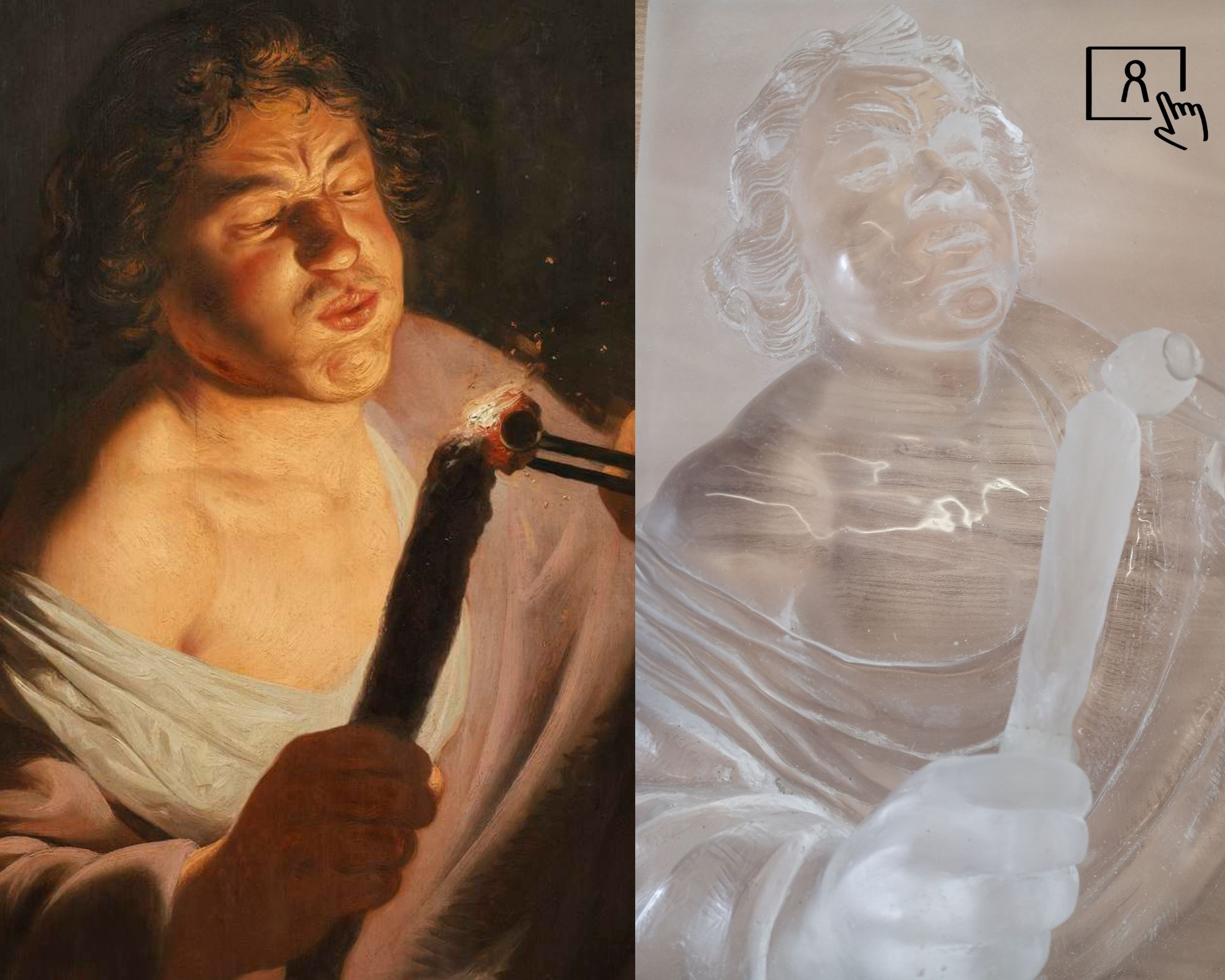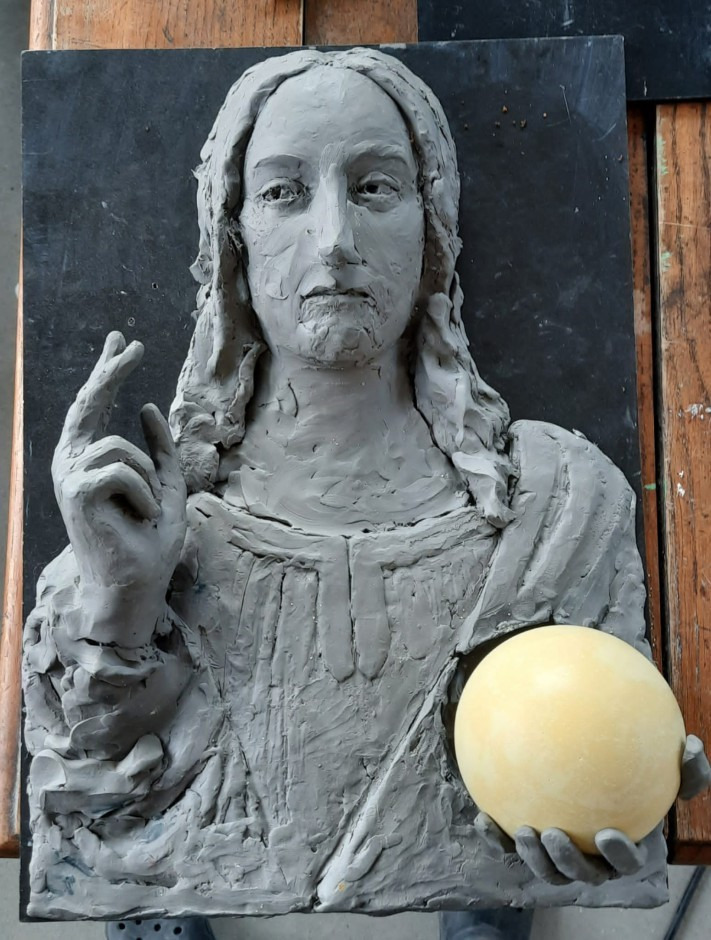Touch tour
Audio description has already become a permanent element of exhibitions. To get to know the described object even better, it is worth using other senses, including the sense of touch. Therefore, a tactile tour will run throughout the entire exhibition. We have planned two new tactile paintings, and replicas of ceramic vessels will also join the “touchable” group.
Tactile images
The process of creating tactile images is extremely interesting, described in detail by the contractor itself – Propsy company.
The process of creating transparent tactile images is a multi-stage process:
The process of creating transparent tactile images is a multi-stage process:
STAGE I
Bas-relief in plasticine. This is the most important stage – we then decide on the composition, height of the presentation and methods of imaging. Consultants play an important role by first getting acquainted with the description of the images and then helping to refine the way the details are presented. However, the most important thing is the sculptor and the effect and readability of the work depend on his/her skills.
STAGE III
Cast in transparent resin. To create a final product from a white plaster model, a silicone mould with a jacket is made (an outer mould that keeps the rubbery silicone in the right shape). Next, we remove and clean the mould and pour transparent resin into it. Once it sets, we make the final touch-ups and the most precise finishes. Then we decide whether a fragment should be as smooth as glass or slightly matt. For very experienced viewers, this allows them to somehow visualise the way light is arranged in the image – the shaded parts are dull and the bright parts are smooth. Interestingly, this choice produces a visual effect similar to a photographic negative. This is the most technologically demanding process. The raw material – transparent polyurethane casting resin – is really expensive, and shortcomings are difficult to repair later. The resin must be deaerated in a pressure machine before pouring. The room must have precisely defined humidity and temperature. Ventilation channels should be made in places where an air bubble may occur. And these are just some of the elements you need to watch out for.
Those who devoted their time and skills to the creation of tactile images:
Beata Małecka – sculptress
Jacek Piotrowski – senior blind consultant
Natalia Kaczor – blind consultant
Kornelia Nowak, Swetoslav Komarou, Anton Sawicki and Wojciech Kuszaj – performers of resin casting and final retouching
Marek Betlej – project manager, co-owner of Propsy sp. z o.o.
Jacek Piotrowski – senior blind consultant
Natalia Kaczor – blind consultant
Kornelia Nowak, Swetoslav Komarou, Anton Sawicki and Wojciech Kuszaj – performers of resin casting and final retouching
Marek Betlej – project manager, co-owner of Propsy sp. z o.o.
The project is carried out as part of the project entitled “Culture without barriers” financed by the Operational Programme Knowledge Education Development (POWER) 2014-2020, Measure 4.3 Transnational cooperation, implemented by the State Fund for the Rehabilitation of the Disabled, in partnership with the Ministry of Culture, National Heritage and Sport, the Culture Without Barriers Foundation and the Institut für Bildung und Kultur e.V. (The Institute for Education and Culture, Remscheid, Germany).

